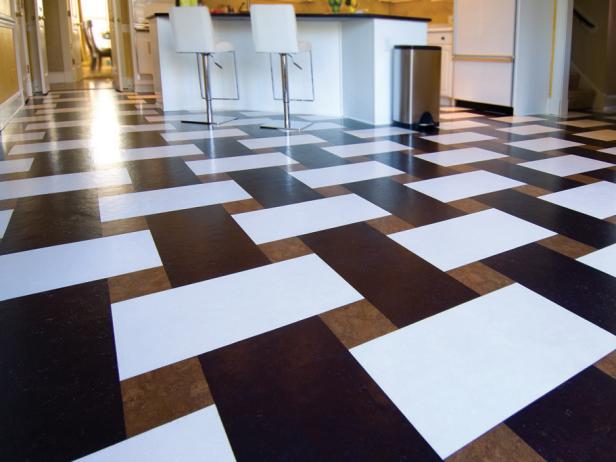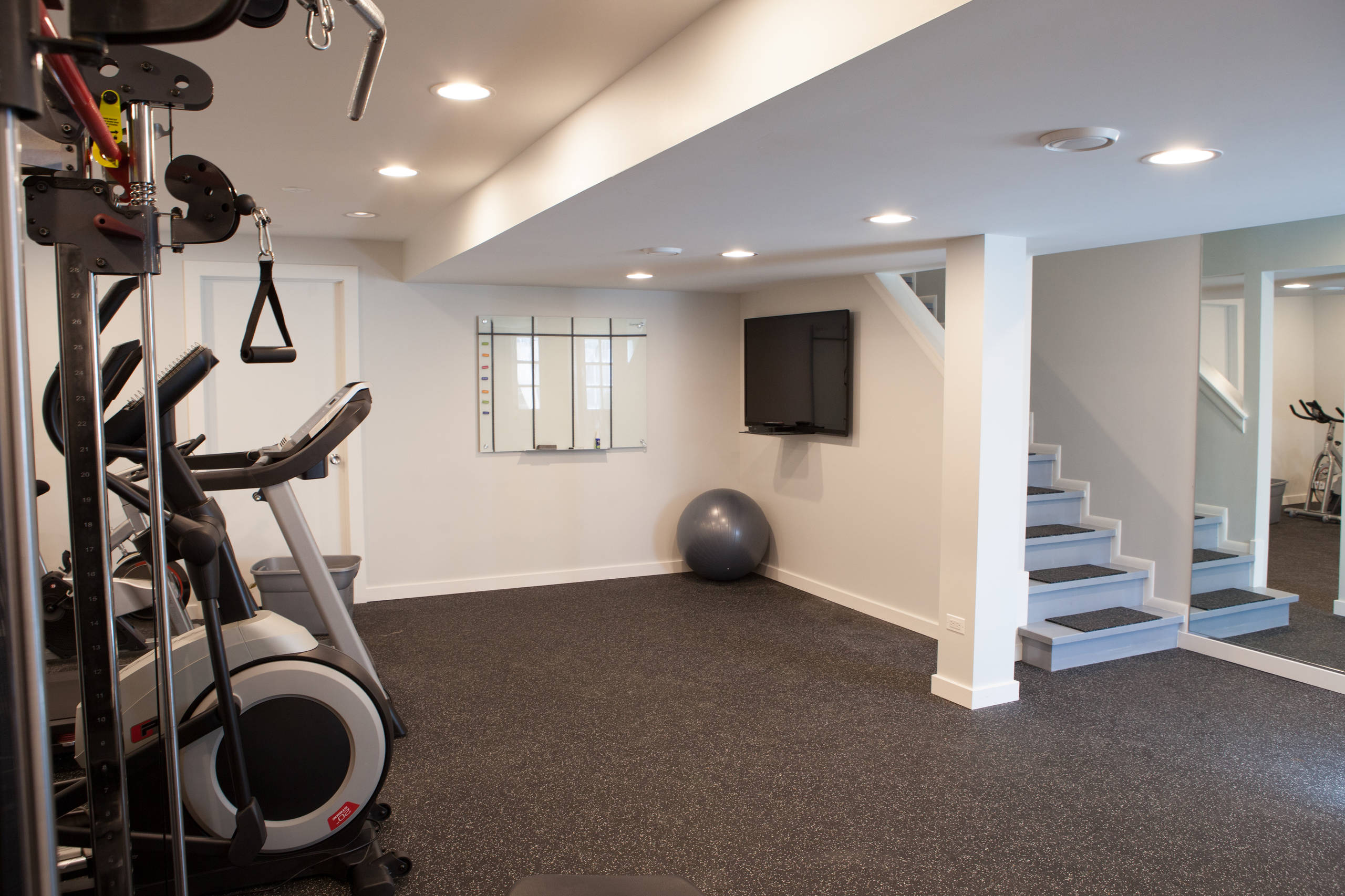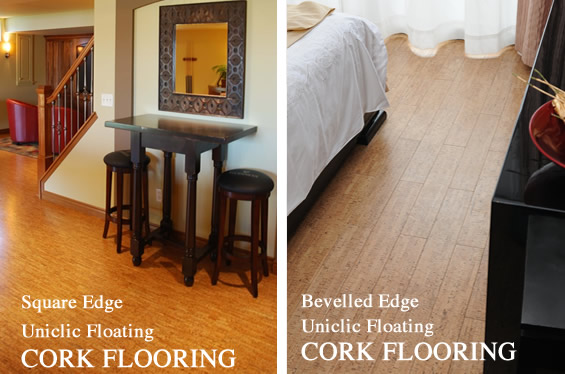The Benefits of Cork Flooring in Basements
Cork flooring has gained popularity as a versatile and eco-friendly option for basements. Its unique properties make it a suitable choice for this space, offering numerous benefits. Let’s talk about the advantages of using cork flooring in basements and how it can enhance the functionality and aesthetics of your basement.
- Noise Reduction: One of the key benefits of cork flooring in basements is its exceptional noise reduction properties. Cork acts as a natural sound absorber, reducing the transmission of noise from foot traffic and other activities above the basement. This is particularly advantageous if you plan to use your basement as a home theater, gym, or entertainment area. The cork flooring will create a quiet and peaceful environment, allowing you to enjoy your activities undisturbed.
- Moisture Resistance: Basements are prone to moisture issues, such as humidity and occasional leaks. Cork flooring, with its natural moisture resistance, is an excellent choice for this damp environment. The cellular structure of cork contains millions of air-filled pockets, making it naturally resistant to water damage. This feature helps prevent the growth of mold and mildew, ensuring a healthy and safe living space.
- Thermal Insulation: Cork flooring provides excellent thermal insulation, keeping your basement warm and cozy. Its unique cellular structure acts as a natural barrier against cold drafts, helping to maintain a comfortable temperature throughout the year. This insulation property can also contribute to energy savings by reducing heating and cooling costs.
- Durability and Resilience: Basements often experience heavy foot traffic and potential impact from dropped objects. Cork flooring’s durability and resilience make it a durable choice for this demanding environment. Its natural elasticity allows it to bounce back from impacts, reducing the risk of scratches and dents. Additionally, cork flooring is known for its long lifespan, making it a cost-effective investment in your basement’s flooring.
- Eco-Friendly and Sustainable: For environmentally-conscious homeowners, cork flooring is a sustainable and eco-friendly option. Cork is harvested from the bark of cork oak trees, which naturally regenerate after the harvest. This process does not harm the trees, making cork flooring a renewable resource. Choosing cork flooring for your basement contributes to the preservation of forests and reduces your carbon footprint.

Sustainable and Eco-Friendly Option for Basements
When it comes to choosing flooring for your basement, considering sustainable and eco-friendly options is becoming increasingly important. Cork flooring has emerged as a popular choice for environmentally-conscious homeowners. Let’s explore why cork flooring is a sustainable and eco-friendly option for basements, highlighting its unique characteristics and benefits.
- Renewable Resource: One of the most significant advantages of cork flooring is that it is made from a renewable resource. Cork is harvested from the bark of cork oak trees, which can be done without causing harm to the tree. After the harvest, the bark regenerates over time, making cork a sustainable material. This renewable nature of cork flooring ensures that it can be produced without depleting natural resources or causing harm to the environment.
- Reduced Carbon Footprint: Cork production has a relatively low environmental impact compared to other flooring materials. The process of harvesting cork involves stripping the bark, which encourages the tree’s growth and absorption of carbon dioxide from the atmosphere. Cork oak trees are known for their ability to capture and store carbon dioxide, making cork flooring a carbon-negative material. By choosing cork flooring for your basement, you can contribute to reducing your carbon footprint and mitigating climate change.
- Allergen-Free and Healthy Indoor Air Quality: Cork flooring is naturally hypoallergenic and resistant to dust mites, mold, and mildew. This characteristic makes it an excellent choice for basements, where moisture and humidity can be common issues. Additionally, cork does not release harmful volatile organic compounds (VOCs) into the air, ensuring a healthier indoor environment. If you or your family members have allergies or respiratory sensitivities, cork flooring can provide a clean and allergen-free space in your basement.
- Energy Efficiency: Cork flooring offers energy-saving benefits due to its thermal insulation properties. It acts as a natural insulator, helping to maintain a comfortable temperature in your basement. This insulation reduces heat loss in the winter and heat gain in the summer, leading to energy savings on heating and cooling costs. By installing cork flooring in your basement, you can contribute to a more energy-efficient home and reduce your energy consumption.
- Longevity and Recyclability: Cork flooring is known for its durability and longevity. With proper care and maintenance, it can last for several decades, making it a long-term investment for your basement. Additionally, at the end of its life cycle, cork flooring can be recycled or repurposed into other products, minimizing waste and extending its sustainability.
How to Install Cork Flooring in Your Basement
Installing cork flooring in your basement can be a rewarding DIY project that enhances the look and functionality of your space. Follow this step-by-step guide that will walk you through the process of installing cork flooring in your basement, ensuring a successful and professional-looking result.
Prepare the Basement: Before installing cork flooring, it’s important to ensure that your basement is properly prepared. Start by cleaning the floor thoroughly and removing any existing flooring. Ensure the surface is smooth, dry, and free of debris. If there are any cracks or uneven areas, consider leveling the floor or applying a suitable underlayment.
Acclimate the Cork Flooring: Cork flooring needs to acclimate to the environment in which it will be installed. Unbox the cork flooring planks and let them sit in the basement for at least 48 hours. This allows the flooring to adjust to the temperature and humidity of the space, minimizing the risk of expansion or contraction after installation.
Lay the Moisture Barrier: Basements can be prone to moisture, so it’s essential to create a moisture barrier before installing the cork flooring. Lay a waterproof underlayment or moisture barrier over the prepared floor. This barrier helps prevent moisture from seeping into the cork flooring, protecting it from potential damage.
Install the Cork Flooring: Start by laying the first row of cork planks along one wall, leaving a small gap between the planks and the wall for expansion. Use a tapping block and a rubber mallet to gently tap the planks together, ensuring a tight fit. Continue installing the remaining rows, staggering the planks for a more visually appealing pattern. Trim the planks as needed to fit around corners and obstacles.
Apply Finishing Touches: Once all the cork planks are installed, it’s time to add the finishing touches. Install baseboards or trim along the walls to cover the expansion gap and create a polished look. Use a cork-specific adhesive to secure any loose planks or edges. Allow the flooring to set and cure as per the manufacturer’s instructions before moving furniture or heavy objects onto the newly installed cork flooring.
Maintain the Cork Flooring: To keep your cork flooring looking its best, it’s important to follow proper maintenance practices. Regularly sweep or vacuum the floor to remove dirt and debris. Avoid using harsh chemicals or abrasive cleaners, as they can damage the finish of the cork. Instead, use a damp mop with a mild, pH-neutral cleaner specifically designed for cork flooring. Wipe up any spills or moisture promptly to prevent staining or warping.
Design Ideas for Cork Flooring in Basements
Cork flooring not only offers practical benefits but also provides a versatile and aesthetically pleasing option for basement design. Whether you want to create a cozy retreat, a stylish entertainment area, or a functional home office, the design possibilities with cork flooring are endless. Let’s explore some design ideas to help you create a cozy and stylish space in your basement using cork flooring.
Natural and Earthy Tones: Embrace the natural beauty of cork flooring by incorporating earthy tones into your basement design. Opt for cork flooring with warm hues like honey, chestnut, or amber. These colors create a cozy and inviting atmosphere, reminiscent of nature. Pair the cork flooring with earthy wall colors, such as soft greens, warm browns, or muted neutrals, to enhance the natural aesthetic.
Pattern and Texture: Cork flooring offers a variety of patterns and textures that can add visual interest to your basement. Consider a cork flooring design that mimics the look of wood or stone for a rustic or contemporary feel. You can also experiment with geometric patterns or mix different shades of cork to create a unique and personalized look. The natural texture of cork adds depth and warmth to the space, enhancing its cozy ambiance.
Layered Rugs: To further enhance the coziness of your basement, layering rugs on top of your cork flooring can create a soft and inviting feel. Choose area rugs with plush textures, such as shaggy or woolen rugs, to add warmth and comfort underfoot. Play with different sizes, shapes, and patterns to create visual interest and define different zones within your basement space.
Natural Light and Window Treatments: Basements often lack natural light, but you can maximize the available light to create a brighter and more inviting space. Keep windows uncovered or opt for sheer window treatments that allow natural light to filter through. If privacy is a concern, consider using translucent blinds or lightweight curtains that still allow light to enter the room. The combination of natural light and the warm tones of cork flooring will make your basement feel airy and welcoming.
Cozy Seating and Soft Furnishings: Invest in comfortable seating options and soft furnishings to create a cozy and inviting seating area in your basement. Plush sofas, oversized armchairs, and floor cushions provide a relaxed and comfortable atmosphere. Incorporate soft throw blankets, textured pillows, and cozy rugs to add warmth and create a space where you can unwind and relax.
Personal Touches and Décor: Add personal touches and décor items that reflect your style and interests to make your basement feel like a true extension of your home. Display family photos, artwork, or sentimental objects on the walls. Incorporate indoor plants to bring a touch of nature indoors and add freshness to the space. Consider installing dimmable lighting fixtures to create a cozy ambiance for different activities and moods.
Design Ideas for Cork Flooring in Basements
Cork flooring is an excellent choice for basements, offering both functionality and style. Its natural warmth, durability, and unique texture make it an ideal flooring option. Let’s explore various design ideas to help you create a cozy and stylish space in your basement using cork flooring. From incorporating natural elements to embracing bold colors, let’s dive into the world of design possibilities for your basement transformation.
Embrace Natural Elements: One way to create a cozy and inviting space in your basement is by embracing natural elements. Pair your cork flooring with earthy tones, such as warm browns, soft greens, or muted neutrals, to create a soothing ambiance. Consider adding indoor plants to bring life and freshness to the space. Natural materials like wood, rattan, and jute can be incorporated through furniture, decor, or accent pieces. This design approach creates a harmonious and serene environment that connects with nature.
Go Bold with Colors: If you’re looking to make a statement in your basement, why not go bold with colors? Cork flooring provides a neutral base that allows you to experiment with vibrant hues. Consider bold accent walls in shades like deep blue, rich burgundy, or vibrant yellow to create a dramatic backdrop. Complement the colorful walls with furniture and decor in contrasting or complementary colors. This design style adds energy and personality to your basement, making it a vibrant and lively space.
Create a Rustic Retreat: For a cozy and rustic aesthetic, opt for cork flooring with a distressed or weathered finish. This texture mimics the look of aged wood, adding character to your basement. Pair the flooring with warm-toned furniture, such as leather sofas, wooden coffee tables, and vintage-inspired accessories. Incorporate cozy elements like plush rugs, chunky knit throws, and rustic lighting fixtures to enhance the cozy atmosphere. This design approach creates a welcoming retreat where you can unwind and relax.
Open Concept Layout: If your basement has an open concept layout, utilize cork flooring to define different areas within the space. Use the flooring as a visual divider between the living area, dining space, and entertainment zone. Consider using different shades or patterns of cork flooring to delineate each area. This design technique creates a sense of flow and organization while maintaining a cohesive look throughout the basement.
Industrial Chic Vibes: For an urban and trendy basement design, embrace the industrial chic style. Pair cork flooring with exposed brick walls, metal accents, and sleek furniture. Incorporate bold lighting fixtures, such as Edison bulbs or industrial-style pendants, to add an edgy touch. Use a mix of textures like leather, concrete, and metal to create visual interest. This design style adds an urban flair to your basement, making it a stylish and modern space.
Cozy Reading Nook: Transform a corner of your basement into a cozy reading nook. Install cork flooring in a lighter shade to create a bright and inviting atmosphere. Add a comfortable armchair or a plush daybed, along with a cozy blanket and a stack of your favorite books. Incorporate a bookshelf or floating shelves to display your reading collection. Use soft, warm lighting, and add some decorative pillows for extra comfort. This design idea creates a tranquil space where you can escape into the world of literature.
Cork Flooring 101 – Bob Vila
Cork Flooring, Cork Tiles, Cork Floor Forna
Cork Works: Installing Cork Flooring – Mother Earth Living
Our Cork Floors – Update Report Cork flooring kitchen, Cork
Related Posts:
- Basement Floor Color Ideas
- Rubber Flooring For Basement
- How To Clear A Basement Floor Drain
- Basement Floor Covering Ideas
- Acid Wash Basement Floor
- Best Flooring For Concrete Basement Floor
- Insulation Under Basement Floor
- Stone Basement Floor
- Basement Floor Leveling Options
- Basement Flooring Options Inexpensive







